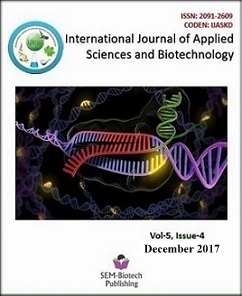Use of Predators for the Biological control of Eriosoma lanigerum (wooly apple aphids) on apple
DOI:
https://doi.org/10.3126/ijasbt.v5i4.18397Keywords:
predators, biological control, aphids, WAAAbstract
Due to increase demand of organic products, biological control methods have gained interest all over the world. Eriosoma lanigerum, commonly known as Wooly apple aphid, is a serious pest of apple. The negative impacts of pesticides on environment and human life make Biological control an important model in the control of the Wooly apple aphid. Some of the biological control agents that have been used in the control of this pest are predators, parasitoids, nectar of flowers etc. The role of the parasitoid Aphelinus mali in the biological control of wooly aphid has been studied by many researchers and found that use of parasitoids Aphelinus mali is not effective when they attack WAA solely in apple orchards. However, efficiency of use of Aphelinus mali in control of WAA is higher when these parasitoids are used along with natural predators (Gontijo, 2011).In recent days, there has been increasing use of predators for the control of aphids. This review focuses on some of the mostly used predators like syrphids, lacewings, earwigs etc. and their role in WAA management. This review focuses on the feeding habits of predators used as biocontrol agents against WAA as well as the occurrence time of these predators before their integration in management practices. Also; this review provides insight into the integration of predators along with other natural enemies for productive control of WAA. This review can be source of information for producers, as well as researchers who are focusing on organic production of apples and integrated wooly aphid management.
Int. J. Appl. Sci. Biotechnol. Vol 5(4): 410-414




